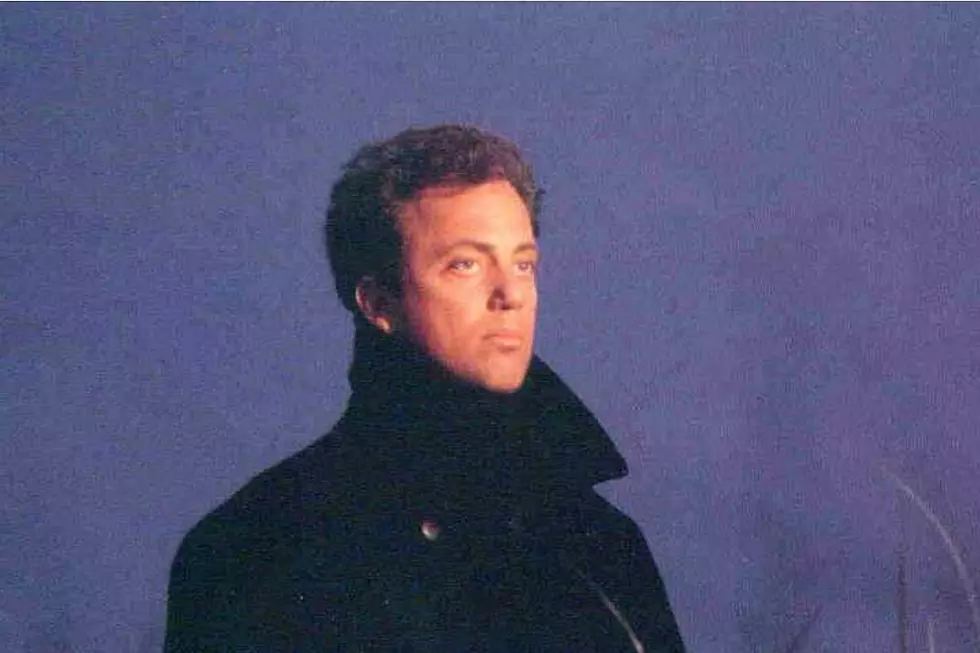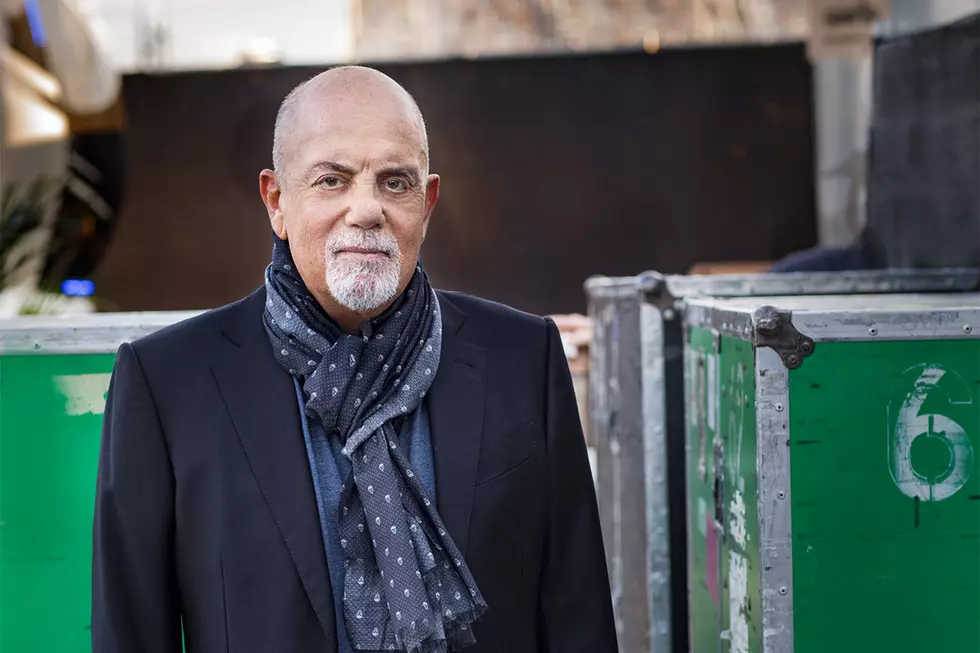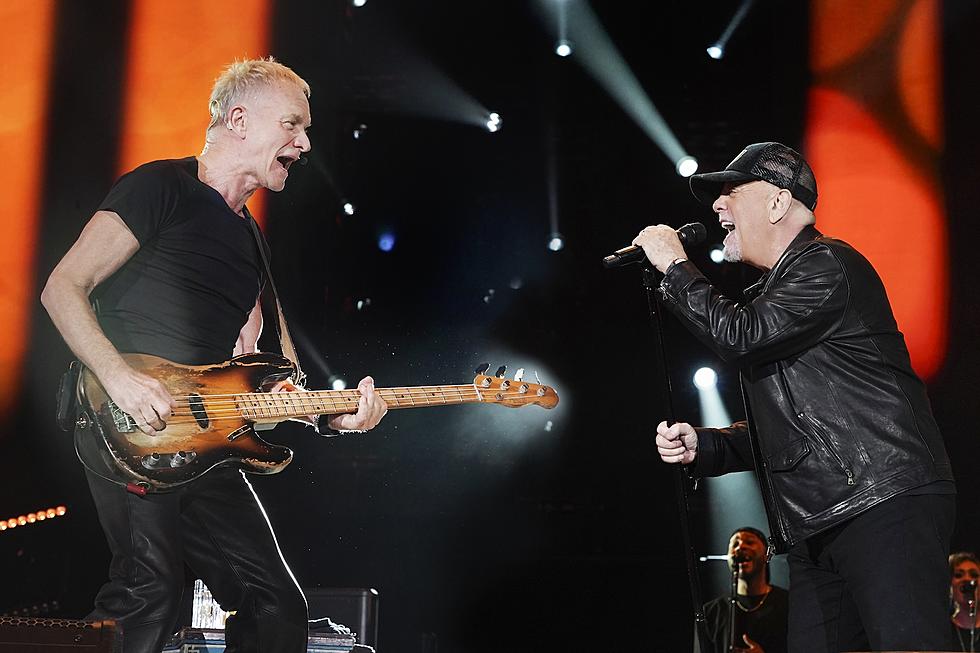
How Billy Joel Emerged From Troubled Times With ‘Storm Front’
Billy Joel rose to prominence in the '70s, but it wasn't until the following decade that he truly came of age, writing and recording a series of albums that showcased his stylistic breadth as well as the melodic depth of his songwriting. As the '90s loomed, Joel found himself a firmly entrenched member of rock's veteran elite – and at a profound artistic and personal crossroads.
That was all reflected in Joel's 11th album Storm Front, released Oct. 17, 1989. Coming on the heels of several markedly turbulent years that saw him firing and suing former manager Frank Weber, terminating his lengthy working relationship with producer Phil Ramone, and dismissing longtime band members Russell Javors and Doug Stegmeyer, the album presented a darker, more uncertain Billy Joel than the one whose upbeat optimism and deepening domestic bliss colored 1983's An Innocent Man and 1986's The Bridge. The change in tone was reflected by the album cover, which depicted a nautical warning flag whose stark red-and-black design stands out against dark storm clouds.
"The flag on the cover is a hurricane flag," Joel told the Deseret News in 1990. "The Beaufort wind force scale runs from a light breeze, No. 1, to hurricane, which is No. 10. The flag you're seeing is No. 10, red with a black square in the middle. It means the worst weather conditions possible. When you see that flag you don't go anywhere. Either you pull your boat out of the water, or you head out to sea and drive into the face of the storm."
Lawsuit and band turnover notwithstanding, Joel's pessimism must have struck at least a few listeners as disingenuous. Although catchy hooks and cynical bravado had gone hand-in-hand in Joel's songbook as far back as his debut, by the late '80s, he was one of the greatest success stories in rock 'n' roll – with a lengthening list of Top 40 singles and multi-platinum albums, a series of top-grossing world tours, and a marriage to supermodel Christie Brinkley stacked up and waiting to outweigh any problems he might think he had.
"I go around, I'm married to Christie Brinkley, the comment I get is, 'Man, you've got it made.' I even have a wry comment in one of the songs: 'Most men hunger for the life I lead.' But you know what? Nobody really knows the inside of somebody's life," a rueful Joel told Newsday. "I never trusted rock-and-roll money, but I should have looked after it a little better."
Whatever the reasons, many fans were surprised to open their copies of Storm Front to find that Ramone, Joel's steady producer starting with The Stranger, had been supplanted by Foreigner's Mick Jones, and to see Javors and Stegmeyer – members of Joel's band for just as long – replaced for sessions that brought in a small army of players. Unlike a lot of solo performers, Joel had taken pains to cultivate an all-for-one image, and to some listeners, the change in direction felt like a betrayal.
"It was a good working relationship with Phil Ramone. I had no problem with it. I just thought it was time to work with someone with a different spin on things," Joel insisted. "Mick Jones is a songwriter, so there we had a good relationship. He's a good musician, a good guitar player, and I thought that would give him a little more insight into what I'm trying to do. I still can't be objective about my own production. I don't have as much faith in my abilities as a recording artist or singer or pop star as I should have. I've got to have another set of brains to tell me what they hear.
"Originally I thought of having Eddie Van Halen produce Storm Front," Joel told Rolling Stone. "I think he's a fantastic musician. And I like the energy in Van Halen records. Our schedules didn't line up, but we had a fun meeting at this Italian restaurant in Manhattan. People would look at us and say, "Isn't that him and him? What are they doing? ... Mick and I hit it off right away. But we didn't hit it off like he was going to be a pushover. He had very strong opinions. But I liked that."
Where Ramone had been an established engineer and producer well before entering Joel's circle, and only saw his cachet increase as a result of their association, splitting with long-tenured band members couldn't help but be a stickier proposition. When the subject inevitably came up during interviews for Storm Front, he basically admitted as much, claiming things had gotten stagnant and he needed a fresh spark.
"It got to a point, it became such a big business, what we were doing," he explained. "We did arena tour after arena tour, and rather than be friends like we used to be, we became business associates. People would kvetch about money, and their deal, and we weren't close. Everybody was looking in everybody else's pocket. On [The Bridge] album, it came to a head. We weren't having fun; it just wasn't fun."
"It is too big a business for people not to change. For friendships and relationships not to change. There's too much money to be made. There's too many other corporate entities that enter into the thing. And it's perfectly natural for somebody to want to work with other people," Joel added to Rolling Stone. "In my case, I was unhappy with the Bridge album and tour and wanted to make some changes. It's only natural."
The musicians negatively affected by this decision saw things slightly differently. "After 13 years, it would've been nice to have gotten a phone call," admitted Javors, while Stegmeyer added: "I can understand completely wanting to change players. That I can respect 100 percent. I'm still friendly with him – I don't want this to be a sour-grapes-type vibe – but I feel after 14 years, I couldn't quite get it out of him."
It all added up to a noticeable change in sound for Joel, which in and of itself, wasn't necessarily a bad thing. After all, Storm Front came after a series of releases that found Joel adopting different styles on an album-to-album basis, from 1980's rock-oriented Glass Houses to 1982's Beatles-inspired The Nylon Curtain and his follow-up homage to pre-Beatles rock, 'An Innocent Man.'
Some sniped that Jones' presence behind the boards resulted in a bloated arena-rock sound, and it's true that 'Storm Front' songs such as 'I Go to Extremes' and 'That's Not Her Style' played to the rafters with big guitars and bigger choruses. It's also true that Joel had been bulking up that aspect of his set list for years, even showing off a little ham-fisted guitar technique of his own for the 1986 single 'A Matter of Trust.' Like it or not, at this point, Billy Joel was an arena artist, and he wasn't about to release an art record no matter who happened to be producing.
"My game plan for Storm Front was simply to make a better record, one that I liked. I was unhappy with the way The Bridge came out. You can hear the seams on that album: It was a bad stitching job. Christie and I'd just had Alexa, and you can hear on that record that I would rather have been at home with the baby than with the band in the studio," Joel admitted. "So yes, there's some rocky stuff on Storm Front, but anyone who's been following my career shouldn't be surprised at all. I'm not just this ballad guy.
"I'm still a guy who plays in rock bands," he added. "And naturally, there's some meaty stuff on the album for this band to sink its teeth into like 'That's Not Her Style.' And yeah, a song like 'Shameless' has plenty of barbecue sauce on it, as they say. But that's only natural. I mean, anyone who thinks of us as mellow should have heard us doing Zeppelin, Cream and Hendrix at soundcheck."
It's just as true, however, that Storm Front felt a little labored as a whole. Whether it was because he'd split apart his creative sounding board, or was distracted with real-life issues, or was simply having a hard time coming up with compelling material after nearly 20 years as a solo artist, a different set of seams showed here. The album's leadoff single, the No. 1 hit "We Didn't Start the Fire," was a novelty track, a Baby Boomer nursery rhyme whose atypically busy production did everything it could to mask its lack of melodic range. The other big hit, "I Go to Extremes," approximated his earlier piano-led sound, but used its driving arrangement and soaring chorus in service of a shallow set of lyrics that Joel quickly took to goofing on in concert.
Elsewhere on the album, Jones' stadium-sized production proved an audibly awkward fit for the less commercially obvious tracks, adding unwelcome bluster to "The Downeaster 'Alexa'" and "Leningrad," and saddling the title track with layers of shrill kludge that prevented it from breathing. None of this is to say that Storm Front didn't represent an improvement over The Bridge, or that it doesn't have its enjoyable moments – just that it didn't sound like an artist at his creative peak. The end result was a set of songs and recordings that suggested whatever was troubling Joel ran far deeper than whoever happened to be producing, playing alongside, or managing him.
In time, that creative malaise would prove to be the end of Joel's career as a recording pop artist: He walked away from making rock records after one more album, 1993's River of Dreams, and hasn't really looked back since. For a while, however, Storm Front looked like just another triumph. Reviews were mixed, but they'd always been for him, and the album was nominated for five Grammys after topping the charts and selling in the millions.
The moral of the story, perhaps, is that even less-than-prime-grade Billy Joel is more than good enough for most of us – something he might want to consider the next time he talks himself out of writing another pop song.
Billy Joel Albums Ranked
More From Ultimate Classic Rock









